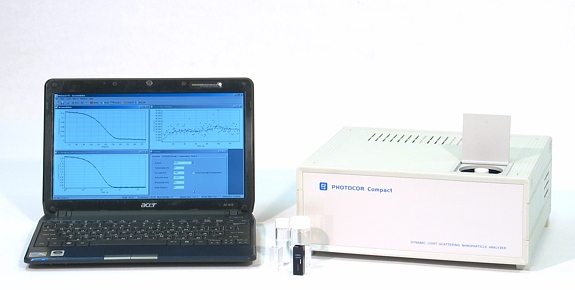Particle Size and Zeta-Potential Analyzer Photocor Compact-Z is designed for measuring electrokinetic potential (zeta-potential) of nanoparticles dispersed in a liquid.
Technical parameters
|
Measuring range |
Zeta potential of the particles is +-200 mV for the particles with sizes from 10 nm to 6 mkm (it depends on the optical characteristics of the samples under investigation) |
|
Typical measurement accuracy |
± 1% (depending on the optical characteristics of the samples under investigation) |
|
Sample volume |
from 1 to 3 ml; standard cell and universal PTFE adapter with palladium electrodes |
|
Scattering angle |
20° |
|
Signal analysis |
the programmable phase detector Photocor-FC |
|
Lazer |
heat stabilized diode laser with a wavelength 654 nm and power 25 mW |
|
Thermostat |
temperature range from 5°С to 90°С, the accuracy is 0.1°С |
Principle of operation of zeta-potential analyzer is based on the phenomenon of dynamic light scattering (method of photon correlation spectroscopy) in the mode of flow rate measurement (in the mode of laser Doppler anemometer). In the mode of the rate measurement in the scattered-light spectrum component appears, which is shifted relative to the carrier frequency by the value of Dopler frequency, which is proportional to the rate of moving particles.To measure the charge of the particles a pair of electrodes, to which a constant voltage s applied, is inserted into the sample under investigation. In a given electric field charged particles move at rates proportional to the particles charges. The value of the electrophoretic rate, measured by light scattering, allows us to calculate the particle mobility and their zeta-potential with the help of the existing theory of electrophoresis.




